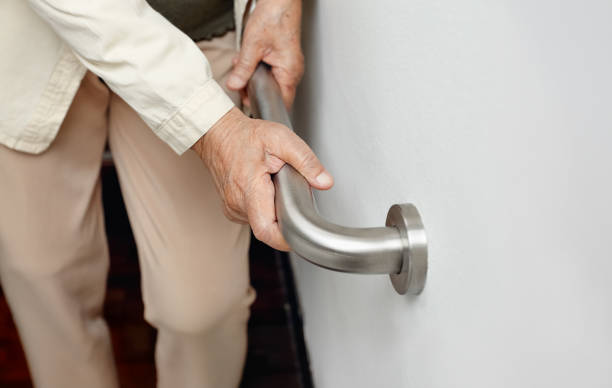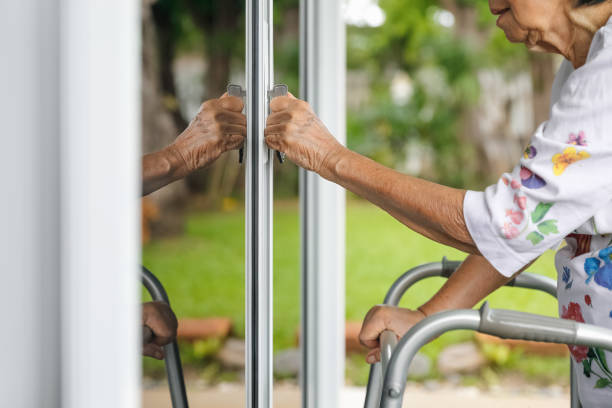As our loved ones age, their safety and comfort become increasingly important. Creating a living environment that accommodates their changing needs can help them maintain their independence while ensuring they feel secure and cared for.
Whether you’re making adjustments to your current home or designing a new space, the key is to focus on accessibility, convenience, and safety. Here are practical steps to help you design a safe and accessible living environment for aging loved ones.
Contents
Evaluate the Current Living Space
Begin by assessing the current home to identify areas that need improvement. Consider mobility challenges, potential hazards, and the overall layout. Pay attention to factors like:
- Narrow doorways that may not accommodate wheelchairs or walkers.
- Slippery floors or loose rugs could lead to falls.
- Poor lighting, especially in hallways and staircases.
- Difficult-to-reach items in kitchens, bathrooms, or closets.
A thorough evaluation will help you prioritize modifications to create a safer space.
Prioritize Fall Prevention
Falls are one of the leading causes of injuries among older adults. Reducing fall risks is essential to creating a safer home environment. Here’s how:
- Install Grab Bars and Handrails: Add sturdy grab bars in bathrooms near toilets and showers, and ensure handrails are secure on both sides of stairs.
- Remove Tripping Hazards: Clear clutter from walkways, secure loose rugs with non-slip pads, and repair uneven flooring.
- Choose Slip-Resistant Flooring: Opt for materials like textured vinyl, rubber, or low-pile carpets to prevent slips.
- Improve Lighting: Use bright, energy-efficient bulbs and ensure all areas, including entryways and outdoor spaces, are well-lit.
Make Accessibility a Priority

An accessible home makes it easier for aging loved ones to move around freely and comfortably. Consider the following adjustments:
- Widen Doorways and Hallways: Ensure doorways are at least 32 inches wide to accommodate wheelchairs or walkers.
- Install Ramps: Replace steps with ramps at entrances to eliminate barriers for those with mobility challenges.
- Lower Countertops and Shelves: Adjust heights to make frequently used items easily reachable without stretching or bending.
- Consider a Bedroom and Bathroom on the Ground Floor: This minimizes the need to use stairs, which can be challenging for older adults.
Focus on Bathroom Safety
Bathrooms are often the most hazardous rooms in a home for older adults. Enhancing safety and accessibility in this space is critical.
- Walk-In Tubs and Showers: Install walk-in tubs or curbless showers to eliminate the need to step over high thresholds.
- Non-Slip Mats: Place non-slip mats inside and outside the shower or tub to reduce slipping risks.
- Raised Toilet Seats: Use raised toilet seats with armrests to make sitting and standing easier.
- Shower Chairs: Provide a stable, waterproof chair for use during bathing.
Enhance Kitchen Usability
The kitchen should be a space where aging loved ones can safely prepare meals and access essentials. Make it user-friendly with these modifications:
- Pull-Out Shelves and Drawers: Install pull-out shelves to make items in lower cabinets easier to reach.
- Lever-Style Faucets: Replace traditional knobs with lever handles for ease of use.
- Stove Safety Features: Use stoves with automatic shut-off timers to prevent accidents.
- Under-Cabinet Lighting: Improve visibility in cooking and preparation areas.
Technology for Safety and Convenience
Modern technology can play a significant role in keeping aging loved ones safe while promoting their independence. Consider implementing:
- Smart Home Devices: Install voice-activated assistants, smart thermostats, and automated lighting systems.
- Medical Alert Systems: Equip your loved one with a wearable device that allows them to call for help in case of an emergency.
- Video Doorbells: Provide a way to see who’s at the door without needing to open it.
- Motion Sensors: Use motion-activated lights in hallways, bathrooms, and bedrooms for nighttime safety.
Promote Comfort and Emotional Well-Being
A safe home isn’t just about preventing physical hazards—it’s also about creating a warm, welcoming space that supports emotional well-being.
- Create Cozy Spaces: Use comfortable furniture and warm lighting to foster relaxation.
- Add Personal Touches: Incorporate familiar items, photos, and decor that evoke happy memories.
- Encourage Natural Light: Open curtains and use sheer fabrics to maximize daylight, which can boost mood and energy levels.
- Designate Social Areas: Arrange seating in living areas to encourage social interaction and prevent feelings of isolation.
Regularly Review and Update the Space
As your loved one’s needs evolve, their living environment may require additional adjustments. Schedule periodic reviews to address new challenges or preferences. Engage with healthcare professionals, occupational therapists, or aging specialists to ensure the space remains functional and supportive.
Involve Your Loved Ones in the Process
Whenever possible, include your aging loved ones in the decision-making process. Their input can provide valuable insight into their preferences and make them feel empowered. Whether it’s choosing grab bar designs or deciding on kitchen layouts, their involvement can foster a sense of ownership and pride in their living space.
Conclusion
Creating a safe and accessible living environment for aging loved ones is an act of love that requires thoughtfulness and planning. By focusing on fall prevention, accessibility, and emotional well-being, you can design a home that supports their independence and enhances their quality of life. With regular updates and attention to their needs, your efforts will ensure they continue to feel safe, comfortable, and cherished in the space they call home.

